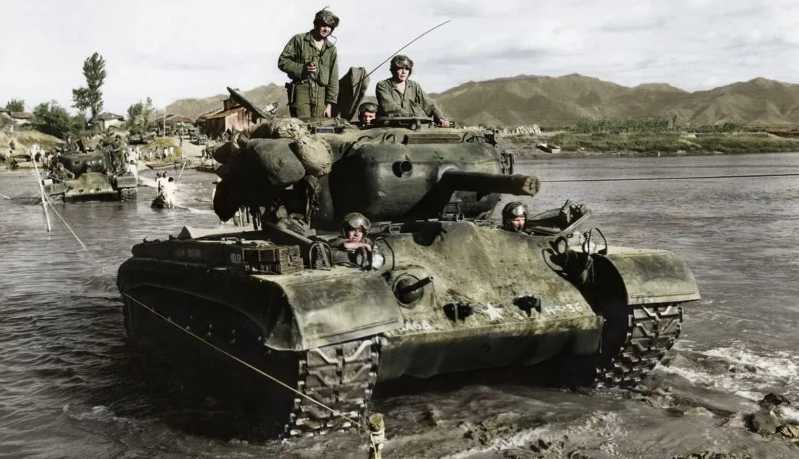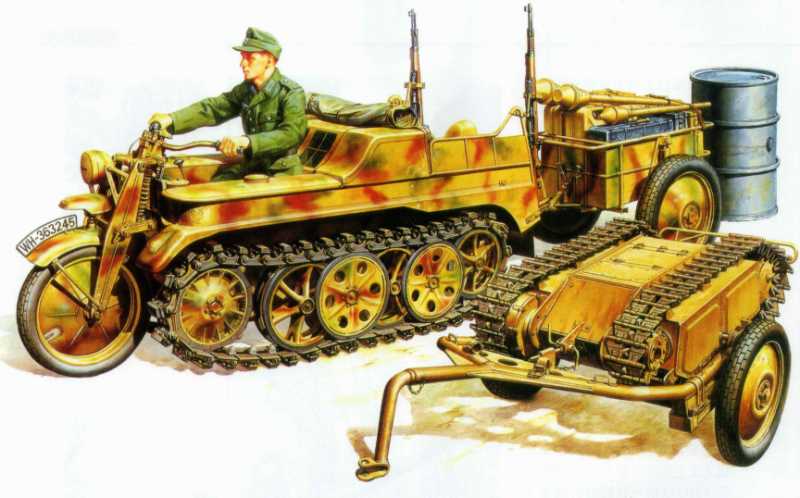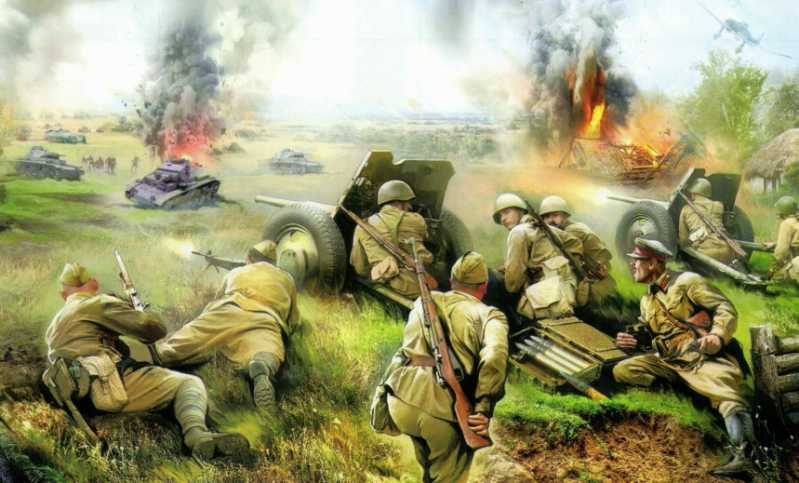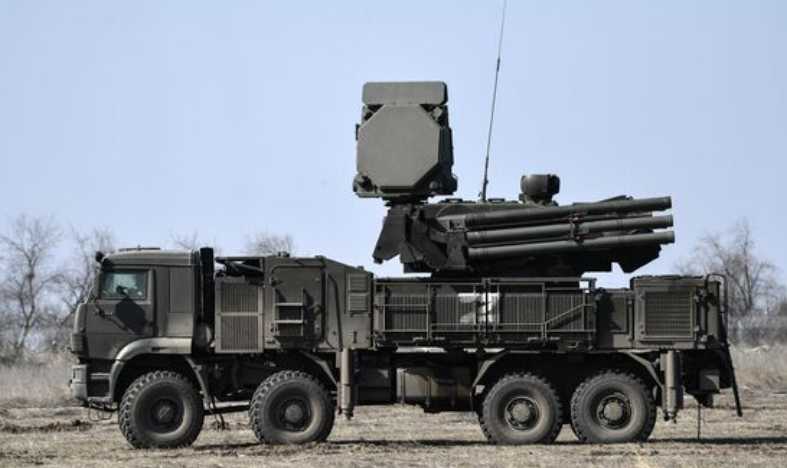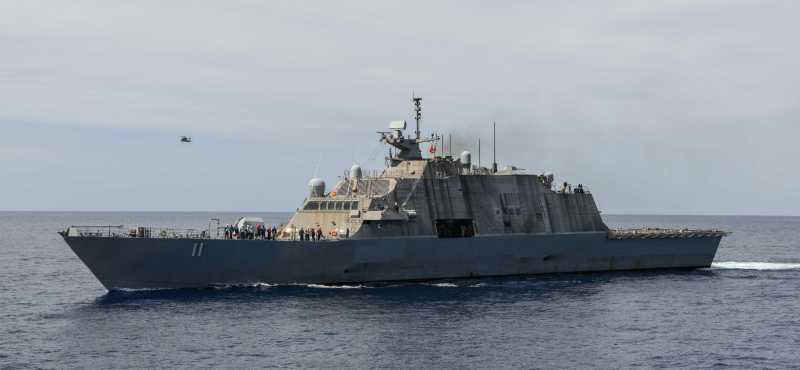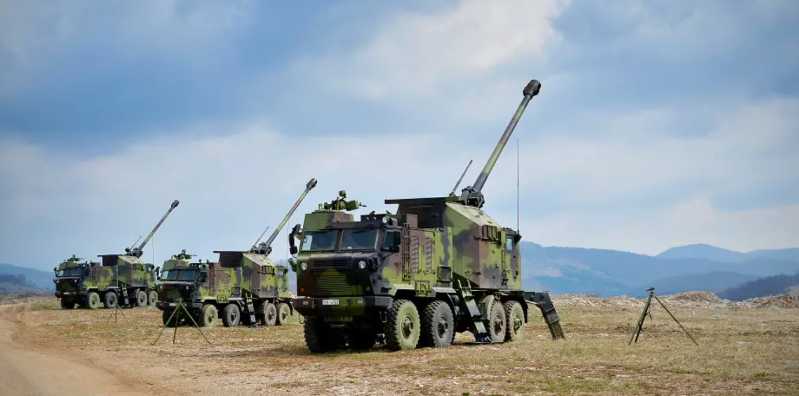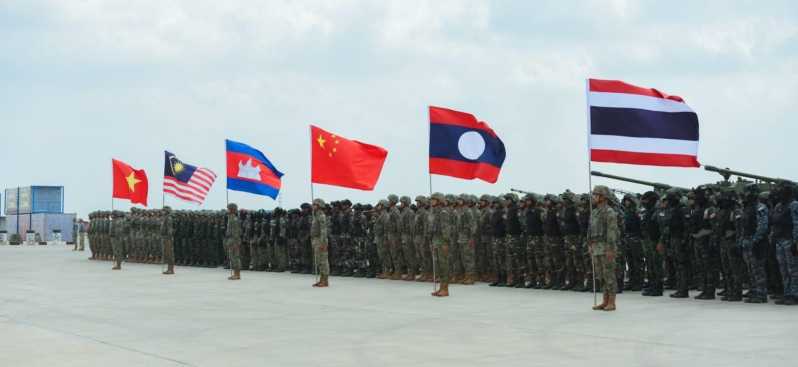The birth of "Lightning"
In addition to the continuous development of military aircraft using piston engines, Germany had already begun to notice the possibility of applying turbojet engines to aircraft power before World War II, and began research and development.
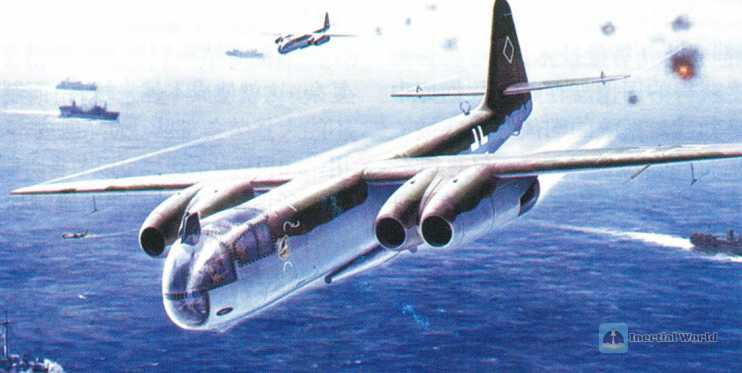
The company at the forefront of technology was Heinkel, which successfully tested a jet engine called HeS1 in March 1937, and installed the third HeS3b on the test aircraft He178 on August 24, 1939, on the eve of the outbreak of World War II, achieving the world’s first jet flight. Taking advantage of this momentum, Heinkel received a trial order for the He280 jet fighter, and should have won the title of the world’s first manufacturer of jet military aircraft, but unfortunately, due to political factors, the development plan of this type of fighter was cancelled by the Imperial Air Ministry, and then fell into the dilemma of being unappreciated. After the Heinkel Company was frozen, Messerschmitt, which had a good relationship with the Nazis, took over the research and development of jet fighters. Later, it became the world’s first practical jet fighter manufacturer by launching the Me262.
As for another company that developed jet military aircraft at the same time as Messerschmitt, it was the Arado Company introduced in this chapter.
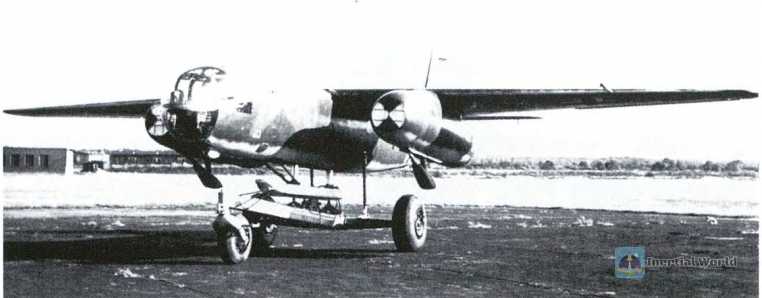
Ar234 "Lightning" reconnaissance/bomber (German: Arado Ar234 Blitz) is the world’s first practical jet-powered bomber, manufactured by the German Arado Company at the end of World War II. In actual use, Ar234 mostly served as a reconnaissance aircraft, and only a few served as bombers. Its speed performance made it almost impossible for enemy aircraft to intercept. "Blitz" is a commonly known alias of the Ar234, which originated from the informal name of the Ar234 B-2 bomber model, "Lightning Bomber" (German: Blitz-Bomber, referring to a very fast bomber). Another alias "Pike" (German: Hecht) comes from one of the units equipped with this aircraft, the "Pike" Special Bomber Unit (German: SonderkommandoHecht).
In the autumn of 1940, the Imperial Air Ministry proposed a requirement for a jet-powered high-speed reconnaissance aircraft with a range of 2,156 kilometers. Arado was the only company that responded. In 1941, the Nazi German Air Force asked Arado to develop a long-range reconnaissance aircraft based on the jet engine being developed by Junkers. The Nazi German Air Force required the new reconnaissance aircraft to use two Jumo 004 gas engines that Junkers was pre-researching, and required it to reach a high speed of 700 kilometers per hour and a range of 2,160 kilometers. The Brandenburg factory under Arado took on the task of research and development, and the responsible persons were the famous aviation designer Walter Blum and the chief aerodynamicist of Arado Aircraft Company, Rudiger Kossin. The project was code-named E370 within Arado. The E370 has a slender fuselage and a straight tapered thin wing equipped with a shoulder wing. The front end of the nose is all glass windows, and there is a single-seat cockpit inside. The engine is arranged under the left and right main wings in a pod manner, so that it can be easily maintained and replaced. Most of the space inside the slender fuselage is reserved for the fuel tank to accommodate the high fuel consumption of the cradle jet engine. In order to facilitate the lifting of the engine, the E370 adopts an upper wing layout, so the landing gear and retraction mechanism cannot be arranged at the root of the wing. In addition, in order to achieve the range required by the military, a large fuel load must be required. If the landing gear and retraction mechanism are arranged inside the fuselage, it will inevitably affect the amount of fuel carried in the fuselage.
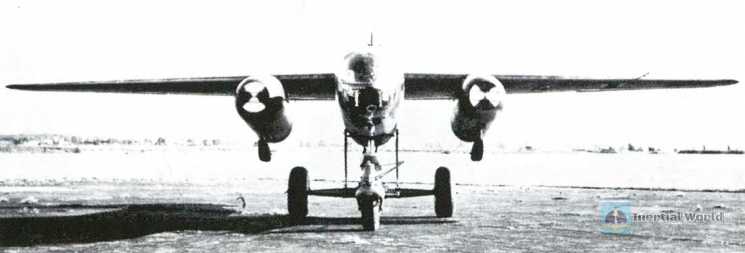
In order to solve this problem, Blum ingeniously cancelled all landing gear and retracting mechanisms and adopted a rare catapult trolley takeoff method. The trolley weighs 600 kg and can fully bear the weight of the E370 fuselage. It adopts a front three-point ground static stability layout and is equipped with a front wheel that can control the aircraft steering and two main wheels with hydraulic brakes. The moment the E370 leaves the ground, the trolley is separated from the aircraft under the operation of the pilot, and the drag plate equipped on the trolley will automatically unfold and brake to stop the gliding. When landing, the E370 relies on three retractable skids installed under the fuselage and engine nacelles to stop gliding (the total weight of the skid is only 3% of the aircraft structure weight). In fact, during the test phase, Arado originally intended to use the BMW P3302 (later BMW003) engine, with a calculated maximum speed of 850 kilometers per hour, but later changed to the faster Junkers Jumo 004 according to the requirements of the Imperial Air Ministry.
After the overall design was completed, Blum submitted the basic design plan and performance parameters of the E370 to the Imperial Air Ministry: the maximum flight speed was 780 kilometers per hour (6,500 meters above the ground), the ceiling was 11,000 meters, and the range was 2,011 kilometers. On February 4, 1942, Erhard Milch, the Minister of the Imperial Air Ministry, who went to the Arado Brandenburg factory to inspect, showed great interest in the E370 (the calculated performance was 830 kilometers per hour and the endurance range was also improved), whose design progress was more specific than the previous year. The rest of the military attachés were also very satisfied with the performance of the E370. Its huge range and excellent high-speed performance were favored by some Nazi high-level officials. Two months later, in April, the Imperial Air Ministry officially ordered Arado to build six prototypes for flight tests and trials, and gave the E370 an official number Ar234A.
At the end of 1941, two Ar234 prototypes, with test numbers V1 and 2, were secretly completed. Their design performance was superior to all aircraft at the time. However, the development of the Jumo 004 engine was not smooth, which seriously delayed the flight test of Ar234. It was not until the beginning of 1943 that Junkers reluctantly provided two Jumo 004 engines. However, the performance of this very early Jumo 004 was very unstable, with a high failure rate, and it was impossible to install it on the prototype for flight test. Arado could only use these two Jumo 004 engines to install on the V1 prototype for a series of ground taxiing tests. It was not until the spring of 1943 that Junkers provided Arado with two improved Jumo 004s, which had improved reliability and finally met the standard for installation flight test. In 1943, Nazi Germany was already losing the war. The increasingly crazy Hitler seemed to be only interested in the latest jet bombers. To a large extent, in order to please the head of state, the Imperial Air Ministry had decided to develop a bomber version of the Ar234 prototype before it took off.
Finally, the Ar234 V1 completed its first flight in June 1943, with a radio call sign (Stammkennzeichen) of "TG+KB". It was transported to the Rheine base with a longer concrete runway for ground taxiing tests, and successfully completed its first flight of 14 minutes on July 18. In the second test flight on August 10, it set a speed record of 650 kilometers per hour, but during the third test flight on the 19th, the aircraft was seriously damaged because it ran off the runway. Since the V2 successfully completed its first flight on September 13, the test plan was able to continue. Although its speed did not reach the 850 kilometers per hour calculated at the beginning, it was indeed possible to exceed 700 kilometers per hour, and there were no problems with other flight performance.

A fateful journey
By the end of September 1943, the V3-V5 prototypes of Ar234 were completed and put into testing. However, the inherent design defect of no landing gear was soon exposed. There were also many problems with the takeoff pulley. First, the pulley could not fall off after the aircraft took off, and then the bearing broke, which caused headaches for the technicians. The more serious problem is that the Ar234 can only slide, and once it lands, it cannot slide autonomously. The ground crew needs to use a crane to lift it onto the pulley to tow it off the runway. This not only hinders the landing of subsequent aircraft, but also makes it extremely vulnerable to attack by enemy aircraft during landing. Therefore, as early as before the completion of the V1 test flight, the Imperial Air Ministry had instructed Arado to develop a model with a general 3-point landing gear (front 3-point) in January 1943.
The flight test of the Ar234 was relatively smooth for a time, but the V2 prototype crashed during the test flight on October 2, 1943. Three days later, test pilot engineer Hoffman reported at a meeting of the Imperial Air Ministry in Berlin that "the V2 prototype crashed due to a malfunction during a climb rate test flight. At that time, the test pilot tried to fly the plane to an altitude of about 9,000 meters. During this process, every time the plane climbed 1,000 meters, the test pilot would report the pressure and temperature in the cabin to the test flight engineer on the ground via radio. But when the plane climbed to an altitude of 8,500 meters, the test pilot reported that the left engine of the plane had malfunctioned, and then the plane began to descend. At an altitude of 4,000 meters, , the aircraft’s instrument showed that its flight speed was 300 kilometers per hour, and the aircraft’s elevator began to vibrate.
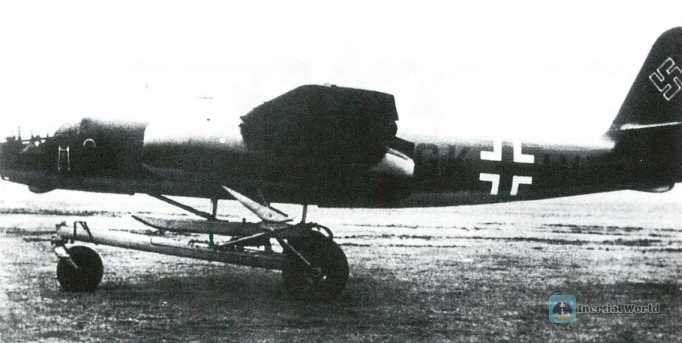
When the aircraft descended to an altitude of 1,500 meters, the test pilot reported that the engine on the left side of the aircraft began to catch fire and burn. After a minute and a half, the aircraft’s elevator and aileron began to vibrate violently, and the aircraft could no longer be controlled..." The ground crew witnessed the left wing of the prototype aircraft begin to burn and then fall off the aircraft. The aircraft fell to the ground together with the test pilot and a violent explosion occurred. Afterwards, Arado attributed the accident to the failure of the engine provided by Junkers, which caused the fire.
This accident did not cause much impact. In December 1943, Arado put 4 new Ar234 prototypes (none of which had landing gear installed) into flight tests. So far, a total of 8 prototypes were equipped with the original design of the slide-ski landing gear. Among them, the V5 and V7 prototypes were still equipped with Jumo 004 engines, while the V6 prototype was equipped with 4 BMW 003 gas engines with a single thrust of 7.831 kN, using four independent engine compartments. The V8 prototype was even more bold to install 4 BMW 003 gas engines in two twin engine compartments under the wings. V7 became the first jet aircraft in history to perform reconnaissance missions on August 2, 1944.
Development of the bomber type
At the same time, the development of the Ar234 bomber type was also carried out in full swing. In order to pursue the fastest flight speed, the cross-slope area of the Ar234 is very small, and the internal space is very tight, so it is impossible to set up an internal bomb bay. Since the prototype uses a trolley catapult to take off, the space under the belly and the engine nacelle is occupied by the skid, and it is impossible to hang bombs on the belly and the lower part of the engine nacelle. Therefore, the technicians of Arado decided to go back to the starting point and redesign and install a retractable front three-point landing gear, thus developing into the Ar234B with the largest production volume.
The No. 1 prototype of the Ar234 B is the Ar234 V9, with the radio call sign "PH+SQ", which flew for the first time on March 12, 1944. In order to accommodate the main landing gear, it removed the central fuel tank from the original three internal fuel tanks, and the front landing gear would be retracted to the rear of the cockpit. In order to make up for the loss of fuel after the removal of the central fuel tank, the capacity of the front and rear fuel tanks was increased, but the endurance performance was inevitably reduced. Compared with this loss, its practicality is more important than the significant improvement of the skid type, so the Imperial Air Ministry only let Ar234 A play a test aircraft, and decided to use Ar234 B as the first mass-produced aircraft. According to the test pilots of Arado, the performance difference between Ar234A and B is very small, but the pilots of the German Air Force do not think so. They claim that the maximum speed of the Ar234 prototype is at least 50 kilometers per hour faster than the mass production. They also pointed out that the assembly quality of the B-type aircraft is poor, the fuselage skin is easily damaged, and there is air leakage in the cockpit. But from the perspective of ground operation, the B-type aircraft equipped with conventional landing gear is undoubtedly more practical. It can take off directly on the runway without spending 20 minutes to place the aircraft on the skid. In addition, the time required for maintenance of Ar234 is less than that of Ju 88T equipped with GM1 power enhancement injection system. The average time for replacing an engine of Ar234 is 25 hours.
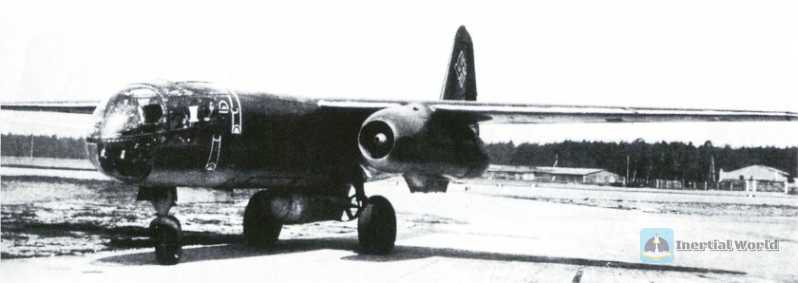
As early as November 5, 1943, when Air Force Commander-in-Chief Goering and Milch went to inspect Arado, they issued instructions requiring the Ar234 B to start mass production in September 1944 and deliver 100 aircraft by the end of the year (later Milch requested to double the number to 200), and 1000 aircraft must be delivered before mid-1945. The Ar234 was originally designed to be used as a reconnaissance aircraft, but because it uses a 3-point retractable landing gear, the space under the engine nacelle and the fuselage can be vacated, giving it the opportunity to be converted into a bomber.
The V9 was tested together with the later completed V10 and V11, proving that it could indeed be used as a bomber. Therefore, the German Air Force skipped the originally scheduled reconnaissance model Ar234 B-1 and placed an order for 20 bomber models of Ar234 B-2. The reason why only the B-2 was selected was that its bombs were all mounted externally, while the reconnaissance camera was installed inside the rear section of the fuselage, which did not conflict and could be selected according to the mission. The reconnaissance model was called Ar234B-2b to distinguish it.
In order to shorten the takeoff run distance of the Ar234 when fully loaded, Arado Company equipped it with the "Walter" Ri-202 (HWK109/500A-1) liquid fuel takeoff booster rocket. When the aircraft takes off, one is hoisted under each of the left and right main wings. They can provide an additional 2.741-4.894 kilonewtons of thrust for the aircraft to take off, and automatically fall off after working for 30 seconds. There is an electric control system inside the fuselage. When the rocket engine on one side stops working, the system will force the booster rocket on the other side to shut down to prevent the dangerous situation of thrust asymmetry. In March 1944, the V9 Ar234 made its first flight. This was the first B-type equipped with retractable landing gear. Although the fuel capacity of the Ar234 B was relatively reduced and the range was shortened, it was very successful in other aspects. Arado was very confident in the versatility and high speed of the Ar234 B, and even prepared for mass production before its first flight. The Ar234B is equipped with two Jumo004B engines with a single thrust of 8.809 kilonewtons, and three auxiliary fuel tanks can be mounted under the fuselage and main wings.
The Ar234 B bomber has three bombing methods-dive bombing with a small angle, low-altitude horizontal bombing, and high-altitude horizontal bombing. However, the most used in actual combat is dive bombing. When diving, the pilot uses the periscope installed on the nose to aim the bombing. When encountering low clouds or bad weather with poor visibility, Ar234 B mostly uses low-altitude horizontal bombing. At this time, the pilot will fly over the target at a low altitude and drop bombs visually. When Ar234 B uses high-altitude horizontal bombing (only used in clear weather with high visibility), the pilot first flies to a distance of about 30 kilometers from the target through map interpretation and radio navigation system, then turns on the "Padin" three-axis autopilot to put the aircraft into a fixed straight and level flight state, then moves the joystick to his right side, unfastens the seat belt on his shoulder, bends down and puts his face on the eyepiece of the "Lutf" bombing sight. The control system of the bombing sight and the aircraft’s autopilot system are connected through a simple primitive computer system. When the pilot adjusts the sight, he can also change the route of the Ar234B at the same time, so as to aim at the target and drop bombs. After the bombing is completed, the pilot fastens the seat belt again, returns the joystick to its original position, turns off the autopilot, and manually drives the aircraft back home. Ar234 B is also the world’s first aircraft to install a parachute at the tail of the aircraft. From then on, the tail parachute became the standard equipment of military combat aircraft in various countries.
In June 1944, less than a year after the first flight of the V1 Ar234, the first batch of 20 pre-production Ar234 Bs rolled off the production line. In the same year, the Nazi German Air Force organized a series of simulated confrontations between the Fw190 fighter and the Ar234 B bomber. Although the Fw190 could easily bite the Ar234 B, the Ar234 B would immediately leave the Fw190 far behind as long as it slightly accelerated or simply entered a dive. The result of the simulated confrontation was: due to the amazing speed of the Ar234 B, it was almost impossible for it to be chased and shot down by enemy aircraft. In fact, after the Ar234 B entered service, the German Air Force had the most advanced jet multi-purpose aircraft in the world. The Ar234B is the world’s first jet bomber. It adopts a traditional aerodynamic layout, with a cantilever beam upper monoplane passing through the fuselage, and a Jumo 004 jet engine suspended under each straight wing. The fuselage adopts a semi-monocoque structure, and the main wing box passes through the fuselage. The nose is sleek, the fuselage is simple in shape, and the flight resistance is small. The two wing tanks and two fuselage tanks of the Ar234 B can carry a total of 3,800 liters of fuel. In addition, a 300-liter auxiliary fuel tank is usually hung under each of the two engine nacelles. When the Ar234B carries 500 kg of bombs to perform bombing missions, it often uses a high-low-high flight profile, which can reach a combat radius of 480 kilometers, a low-low-low flight profile can reach a combat radius of 200 kilometers, and a high-high-high flight profile can reach a combat radius of 720 kilometers when performing reconnaissance missions.
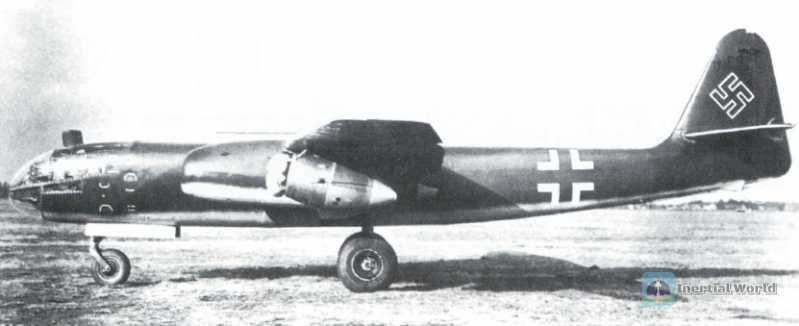
Ar234 has a speed of more than 700 kilometers per hour, and is the only German bomber that can still operate on the Western Front in 1945. Despite its high speed, most of them were equipped with a MG151 20mm cannon to protect the tail and a rear-view periscope sight (installed on the top of the nose cockpit) for safety reasons. Although Arado claims that the maximum bomb load of the Ar234B is 1.5 tons, many old pilots of the KG 76 Wing (the 76th Bomber Wing, the only unit equipped with Ar234B on a large scale during the war) recalled that the standard load of the Ar234 B was only a 500 kg bomb when performing bombing missions.
Night fighter
A small number of Ar234 Bs were equipped with FuG218 airborne radars (antler antennas were installed on the head of the aircraft), and a seat was added behind the pilot for the airborne radar operator. A MG151 20mm cannon pod was also installed under the fuselage, making it a brand new night fighter. The Imperial Air Ministry planned to convert 30 Ar234Bs into night fighters, but only one prototype was completed by the end of 1944. At the end of 1944, Kurt Welter of the Air Force tested the Me262 night fighter version, and the Air Ministry asked him to evaluate whether the Ar234 could be competent for night combat. Welter’s conclusion was not optimistic. He believed that the panoramic cockpit of the Ar234 was easily damaged in combat, and that this type of cockpit would produce light reflections, which would seriously interfere with the pilot’s vision during takeoff and landing. The first Ar234 B night fighter was sent to Orenburg at the end of 1944, and test pilot Joseph Bisping and radar operator Albert Vogel conducted a series of tests on the aircraft. Bisping was from the experimental squadron of the German Air Force High Command. He had previously tested the Ar234V15 equipped with two BMW 003 engines. This aircraft and the V17 were used to verify whether the BMW 003 was suitable for the Ar234. On February 23, 1944, Bisping and Vogel died in a takeoff accident. The cause of the accident was that the airport lighting equipment was mistakenly turned off, resulting in the plane crashing. On March 1, 1945, the second Ar234B night fighter was transported to Orenburg. The lower part of the cockpit glass of this aircraft was painted black to reduce the interference of light reflection to the pilot. Kurt Bornau was appointed as the test pilot and the radar operator was Bep Marchette. When familiarizing himself with the aircraft, Marchette was surprised to find that there was a transparent instrument panel installed above his head. This instrument panel was installed on the ground by the ground crew after the radar operator entered the cockpit, which meant that he could not leave the cockpit to escape in an emergency. At the strong request of Machete, the transparent instrument panel was changed to a design that could be thrown away in an emergency. In actual combat tests, Bonau and Machete intercepted the British Air Force’s "Mosquito" high-speed bombers several times, but never shot down the enemy aircraft. By the end of March, two other experienced night fighter pilots, Gustav Francis and Joseph Putzkuhle, also tested the night combat Ar234, but did not participate in actual combat tests.
After receiving an order for 20 B-2 models, from the first flight of the No. 1 machine (also called Ar234 S1 because it was used in practical tests) on June 8, 1944, a total of 210 were produced until the defeat. The reason why the production quantity is less than the originally expected 1,000 is that the Ar234C series, which has much higher performance than the B series, looks more promising.
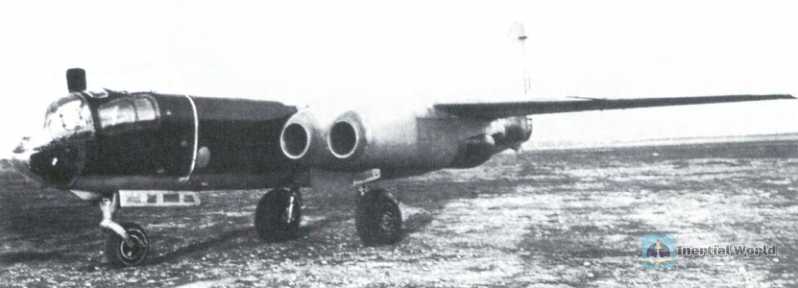
Four-engine bomber
In June 1943, after the completion of Ar234 V1, Arado began to design the four-engine Ar234C series, equipped with the BMW003 engine that was originally scheduled to be installed. According to calculations, it can reach a maximum speed of 860 kilometers per hour and a range of 1470 kilometers. The Air Force had high expectations for the C series, which far exceeded the performance of the B series. When the war was coming to an end, Arado began to prepare for mass production of the Ar234C four-engine bomber to complete the Air Force’s huge order - 1795 C-3, 20 C-4, 1395 C-5, and 290 C-7. But because this model appeared too late, only 14 C models were completed before the defeat.
Ar234 C can take off from a short distance without a booster rocket. Peter Capps, the chief test pilot of Ar234 C, recalled that "the 4-engine Ar234C has excellent take-off and landing performance, and its climbing performance is better than any fighter at the time. But its high-speed level flight performance is very poor. Although the total thrust of the engine has increased, the maximum speed at low altitude has not increased much compared with Ar234B. The reason is that when Ar234 accelerates and flies at low altitude, harmful structural vibration will immediately occur." At the end of World War II, due to the absolute speed advantage of Ar234 C over Allied aircraft, the German army also planned to develop Ar234C into an air-launched cruise missile platform (there are data showing that the combination of Ar234C and V1 missiles has been tested many times). In addition, the German army also planned to convert Ar234 C into the mother aircraft of the emergency interceptor ArE381. In the plan, ArE381 has a fuselage with a circular cross-section and a small circular window at the nose to provide limited vision for the pilot. The entire fuselage has a 5 mm thick armor protection.
Due to the extremely small cockpit space, the pilot must adopt a prone position. There is a removable 140 mm (5.5 inches) thick bulletproof glass in front of it. There is a protrusion on each side of the fuselage inside the driver’s body. There are two C-fluid tanks beside the driver’s legs and a T-fluid tank behind the feet. The straight wings are located in the middle of the fuselage. The protruding part on the back of the fuselage is the outer cover of the aircraft gun. Inside is installed a MK108 30 mm aircraft gun with 60 rounds of ammunition. The ArE381 has a double vertical tail and a HWK109-509A rocket engine slightly in front of the tail. There is a retractable landing skid on the belly of the fuselage, and a parachute can be released from the upper fuselage when landing. The driver must enter and exit through a hatch above the cockpit, so he must enter the cockpit before the ArE381 is mounted on the Ar234C four-engine jet bomber. Once in, they could not get out, and in case of emergency, they could only wait for death. Since the rocket-powered ArE381 had a short time to stay in the air, the mother plane Ar234C first sent it to the vicinity of the Allied strategic bomber group, and then the ArE381 completed the interception mission. However, most of these avant-garde weapons only remained in the drawing or model stage.
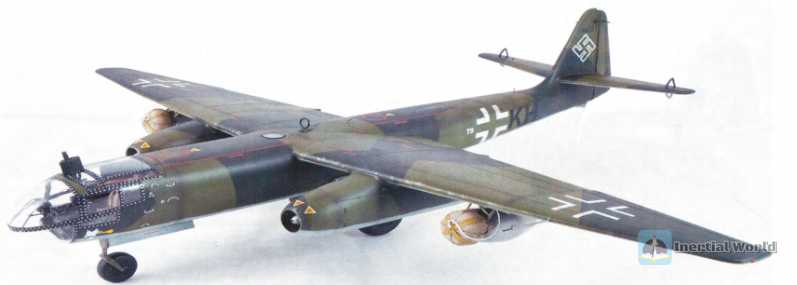
In addition, the Ar234 has a derivative model - an ultra-long-range improved model. The way to increase the range is to tow a huge fuel tank modified from a V1 missile behind the fuselage, remove the warhead, engine and tail of the V1 missile, fill it with fuel, and tow it behind the Ar234 to supply fuel. Once the test was successful, the German Air Force also planned to promote this towed auxiliary fuel tank to other combat aircraft. Albert Speer, the Minister of Munitions of Nazi Germany, recorded in detail in his personal diary (November 5, 1944) that "the Führer has a strong personal interest in this Ar234 ultra-long-range improved bomber. He hopes that this improved version can be successfully developed as soon as possible and quickly promoted to other German aircraft for use."
But this improved version was not successful. The test pilot found that the towed auxiliary fuel tank greatly affected the flight performance of the Ar234, making the maneuverability and stability extremely poor. And as Germany’s defeat approached, this experiment was no longer allowed to continue. After the C series, there were plans for the D, E, and F series, and even the mistletoe type and turboprop engine-equipped type, but none of them were realized.
From the "Sparrow Task Force" to the Long-Range Reconnaissance Brigade
The Ar234 was first put into actual combat as a reconnaissance aircraft. On August 2, 1944, the Ar234 V5 piloted by Lieutenant Horst Goetz and the Ar234 V7 piloted by Lieutenant Erich Sommer, belonging to the experimental unit later called "Kommando Sperline", were dispatched to scout the Allied ground forces in France. This was the world’s first combat operation of jet reconnaissance aircraft.
Due to the high speed of the Ar234, it would be more effective as a reconnaissance aircraft than as a bomber. It was difficult for the propeller fighters of the Allied camp to intercept the Ar234 flying at high speed at high altitude. After that, Ar234 B was assigned to the three long-range reconnaissance squadrons, 1.(F)/33 (i.e. the 1st Squadron of the 33rd Long-Range Reconnaissance Brigade, or "Long-Range Reconnaissance Squadron", the same below), 1.(F)/100, and 1.(F)/123, as well as another experimental unit, the "Lance Task Force", and began to conduct reconnaissance in the UK from Denmark and Norway. It can be said that it was the only source of air intelligence for the German army at that time and was a very valuable combat force.
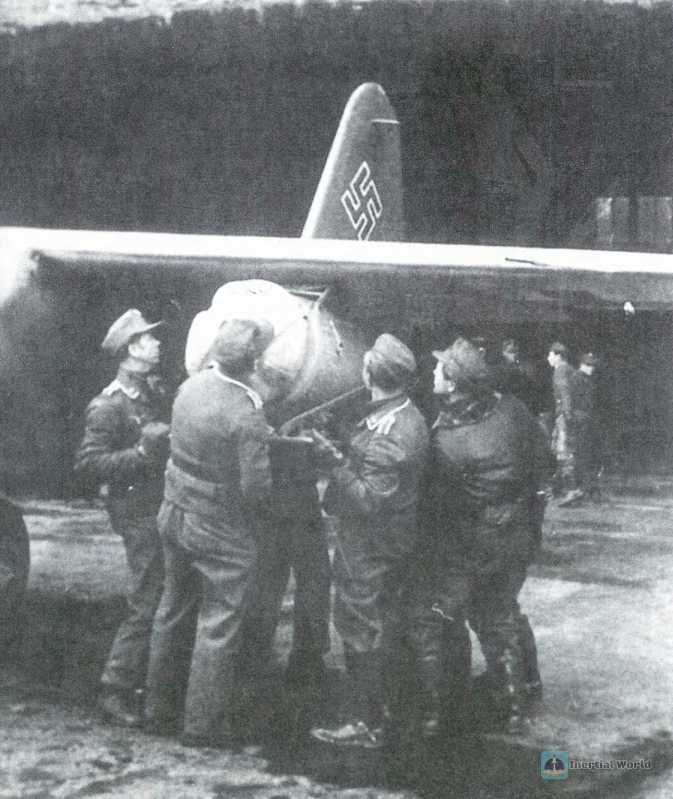
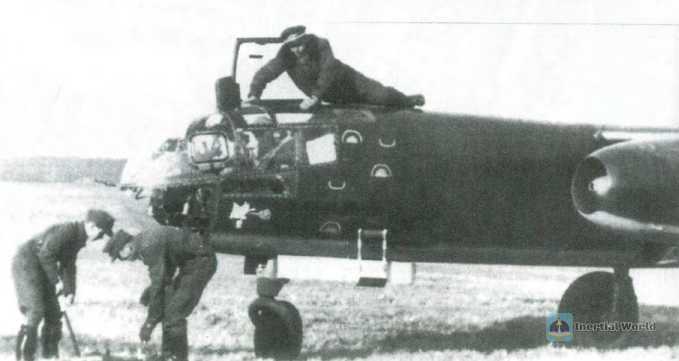
KG76 Bomber Wing
On the other hand, the first bomber unit to replace this type of aircraft was the 3rd Squadron of KG76 in June 1944, but it was more troublesome than expected to switch from a low-speed piston engine bomber to a high-speed Ar234B. By the time they could really take on combat missions, it was already December when Germany was almost forced into a desperate situation. At that time, the Allies had advanced to the western border of Germany, and the German ground forces were gathering their last forces to fight back in the "Battle of the Bulge". On the morning of December 24, 8 Ar234 The B-2s each carried a 500 kg bomb in bad weather, but the results could not be confirmed due to poor visibility.
Like the Me262, it was very difficult for the Ar234 to hit small targets on the ground with bombs at high speed. Even if it was equipped with a special bombing sight Lotfe7, it was just a makeshift performance of a piston engine aircraft, not to mention that it could not perform high-angle dive bombing like the Ju87.
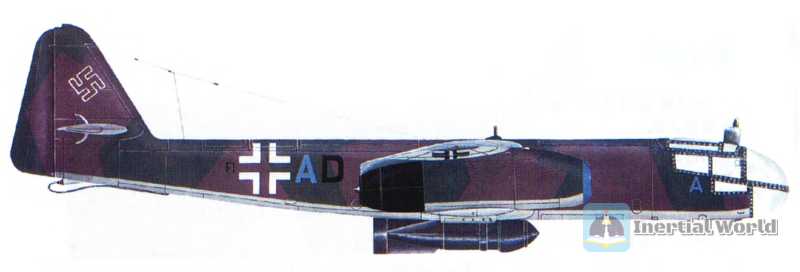
Ar234 The B-2 was rated to carry a maximum of 1,500 kg of bombs, but in actual combat, it was limited to less than 1,000 kg, and generally only one 500 kg bomb was carried. The reason for this was that if it was really fully loaded with 1,000 kg, the maximum speed would be reduced to 600 kilometers per hour, making it vulnerable to interception by piston-engine fighters of the Allies. Even if the Ar234 B-2 was not fully loaded with bombs, it could not rest assured. On February 24, 1945, the Ar234 B-2, which belonged to the 9th Squadron of KG 76, numbered W.Nr140173, and radio call sign "F1+MT", was shot down by the P-47 "Thunderbolt" of the US Army Air Force and captured after forced landing, becoming the first Ar234 in the hands of the Allies. After the war, Morich, a pilot of the 6th Squadron of KG 76, recalled the scene of driving the Ar234 in combat and said: "In all operations, we will face the threat of "Storm" and "Mustang". The most dangerous moments are the slower takeoff and landing phases. Once airborne, the Arado is fast enough to shake off the piston fighters unless they adopt a sneak attack tactic of diving. "
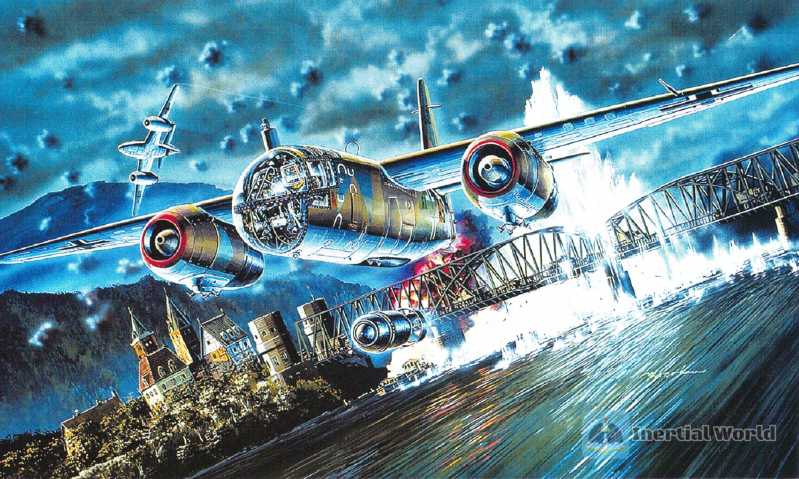
In March 1945, the 3rd Group of KG 76 successfully bombed the famous Remagen Bridge on the Rhine, but this was the only achievement it could take to the table. At the end of March, due to the threat of the British vanguard, the 3rd Group of KG 76 and the 6th Squadron of KG 76 had to retreat to Farel and Marx south of Wilhelmshaven.
On April 2, 6 Ar234s of the 3rd Group of KG 76 bombed the British armored convoy south of the Rhine. Two days later, KG 76th Squadron 6 dispatched 3 aircraft to attack a group of Allied vehicles in the Nordhorn-Lingen area. On April 10, the Allies dispatched 1,100 bombers to carry out a large-scale air raid on the jet fighter bases in northern Germany. Because the aircraft were hidden in the woods in time, no Ar234 was destroyed.

On April 26, KG The 76th Wing Headquarters dispatched two Ar234B-2s to attack Soviet armored vehicles near Berlin. Two days later, the 3rd Battalion of KG76 retreated from Kaltenkirchen to Leck, not far from the Danish border. In the following 9 days, KG76 did not carry out any decent combat missions, and only launched a few sporadic attacks on the Soviet army near Berlin.
On May 3, Cruz of the 8th Squadron drove the Ar234 to complete KG76’s last combat operation in World War II. On the same day, 4 Ar234 C-3s were delivered to KG 76, but they came too late and failed to catch the last train of the war. On May 5, the last 9 Ar234s of KG76 that could still fly were ordered to fly to Stavanger, Norway, and the aircraft that could not fly were burned. In the last few days of World War II, KG Most of the personnel of 76 were reorganized into infantry and were responsible for guarding Schleswig-Holstein until Germany announced its unconditional surrender on May 8. In addition, the 3rd Squadron of KG78 also replaced the Ar234 B-2 and carried out some actual combat activities, but had almost no merit before the defeat.
In March 1945, the Soviet Red Army occupied the Ar234 production plant of Arado Company, but the German army had blown up the factory before the Soviet army arrived. So far, Arado Company has delivered a total of 210 Ar234 B and 14 Ar234C to the Nazi German Air Force. Only one Arado Ar234 has survived to this day. This aircraft is the Ar234 B-2 with factory serial number 140312. It was one of the nine aircraft surrendered to the British at the Sura base near Stavanger, Norway. The aircraft is currently preserved in the Steven Udvar-Hazy Center of the National Air and Space Museum in Washington, DC, USA.




